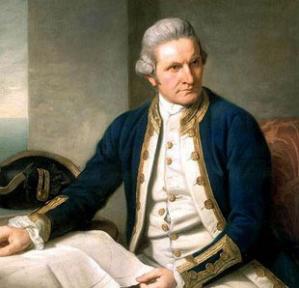Looking for design inspiration? Browse our curated collections!
February 18th, 2015 - 08:48 AM

Dracula
Hello and welcome to part 2 of this blog.
As I mentioned in part 1, as well as being renowned as the home of Caedmon, the first recorded English poet, Whitby has many other Literary connections. Both Lewis Carol and Charles Dickens being among the many visitors to the town. Whitby however, is best know for it's connection with Bram Stoker and his horror classic "Dracula", published in 1897. It was while staying in Whitby that Stoker came across the name of Vlad Dracula, better known as Vlad the Impaler, while researching Transylvanian history in Whitby library.
Stoker visited Whitby in 1890 while writing "Dracula" and stayed in The Royal Hotel, situated on the west cliff. He was so impressed with the place, he used it as the location for Dracula's arrival in England. The ruins of Whitby abbey with the nearby churchyard of St Mary's, provided the perfect setting for his Gothic horror and it is within St Mary's churchyard that Dracula hides when he lands in Whitby.
During a storm in 1885 a Russian ship called the Dmitry ran ashore in Whitby harbour and it was this actual event that Stoker used for Dracula's arrival. In the book it is a Russian ship called the Demeter that crashes onto Tate Hill sands. The ship is deserted apart from the corpse of the Captain which is tied to the ship's wheel and a large black dog which jumps from the ship and runs through the streets and up the 199 steps to the churchyard. The black dog is based on a local legend of a ghostly hound said to haunt Whitby and the surrounding coast and moorlands.
Fans of this classic horror flock to Whitby from all over the world and every year the town hosts the Whitby Goth weekend in April and October. www.whitbygothweekend.co.uk
Captain James Cook
As well as literary connections, Whitby also has a rich maritime history as well. It was here that the young James Cook was trained in seamanship and navigation, plying his early trade on the Whitby coal barks. Barks were stocky and strong little sailing vessels which were used to transport coal from the city of Newcastle in the North down to London. When Cook later joined the Royal navy, it was Whitby coal barks that he used for his voyages around the world. His ships the Endeavour, the Resolution, the Discovery and the Adventure were all built at Whitby. The Building Cook lodged in while in Whitby still stands and is now the Captain Cook Memorial Museum. www.cookmuseumwhitby.co.uk
Captain Cook was born in the North Yorkshire village of Marton, which is now a suburb of my home town of Middlesbrough. I literally live just down the road from where he was born. His birthplace is marked by an urn which stands in the grounds of Stewart's park and St Cuthbert's church, where Cook was Christened, is located on Stokesley road, just over the road from the park. Another place of interest in the park is the Captain Cook Birthplace Museum. www.captcook-ne.co.uk
That's its for this time,
Best wishes
Wayne Eaton
Comments
There are no comments on this blog. Click here to post the first comment.